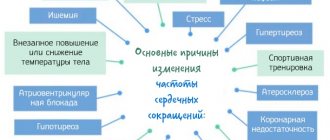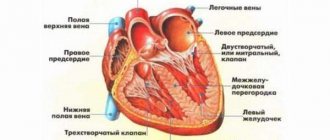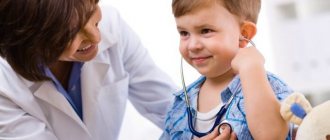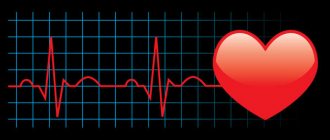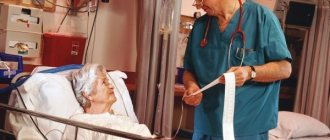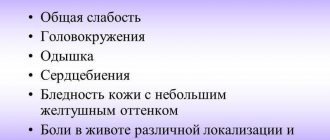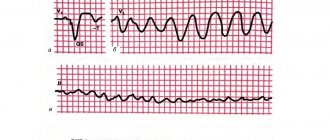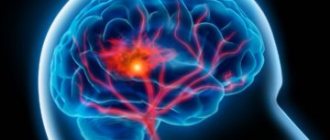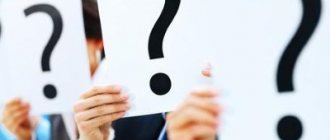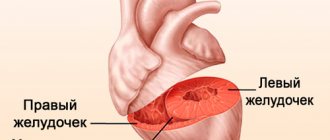Atrial fibrillation is characterized by chaotic twitching of the muscle fibers of the atria and disruption of the conduction of electrical impulses in the myocardium. Due to a rhythm failure, the heart rate in this pathology can fluctuate between 200-300 beats per minute for several hours or even days. In normal operation, the excitation of the atria is followed by contractions of the ventricles, but with atrial fibrillation one phase of this cycle disappears, as a result of which a full systolic contraction of the heart does not occur. This disease most often occurs in adulthood and old age, and is much less often detected in adolescents and children, who, as a rule, have congenital malformations of the heart muscle.
Classification of paroxysmal arrhythmia
In order to assess paroxysmal arrhythmia, the doctor pays special attention to the duration of the attacks, since it is this indicator that allows one to identify the type of rhythmic disturbances. With paroxysmal arrhythmia, the attack lasts about a day. But it also happens that it lasts a week. In this case, there is a huge risk of blood clots and the development of an ischemic stroke, so you should not delay going to the doctor. This type of arrhythmia is most typical for older people, less common after 30 years.
The frequency of atrial contractions is of 2 types:
- fluttering up to 200 beats per minute;
- flicker over 300.
Not all impulses pass into the ventricles, so the frequency of contractions of the ventricles is classified differently:
- at 60 beats per minute, the form of the disease is bradysystolic in nature;
- if more than 90 beats occur - tachysystolic;
- from 60 to 90 beats per minute - intermediate or normosystolic.
If attacks of paroxysmal arrhythmia are often repeated, then the disease has a relapsing form.
Classification of paroxysmal arrhythmia depending on the location of the defect:
- The sinus type is characterized by a heart rate of 80 to 150 beats per minute. Signs appear sluggishly, but they intensify with increased blood pressure or against the background of nervous overexcitation. This paroxysmal arrhythmia occurs less frequently than other types.
- The supraventricular (atrial) type manifests itself with hypotension (low blood pressure). Heart rate increases to 250 beats per minute. At the same time, blood pressure continues to decrease, which may result in blue extremities.
- Ventricular view – beat rate above 130. Arrhythmia occurs in the His bundle, that is, in the legs of the organ.
- The atrioventricular (nodal) appearance appears after heart attacks. In the absence of pathology, impulses are transmitted through the atrioventricular nodes, after which they spread to the valve rings and further to the atria and ventricles. With nodal arrhythmia, impulse signals are immediately sent from the sinus node to the ventricles and atria, which disrupts the overall rhythm.
Preventive measures for arrhythmia
After completion of treatment, the patient must follow all doctor's recommendations. It is necessary to monitor your heart rate several times a week. If it is far from normal, then you should take pills selected by your doctor. In the first 2 months after the attack, to restore the body, you will have to take medications that prevent the formation of blood clots.
Doctors pay special attention to lifestyle. Doctors advise patients with heart contraction problems to take walks in the fresh air more often. High-intensity exercise has a good effect on the condition of the main muscle of the body, but exercises should be selected based on your capabilities. Patients also need to normalize their weight and undergo a course of psychological therapy to increase stress resistance.
Causes
Causes of paroxysmal arrhythmia against the background of diseases of the cardiovascular system:
- myocarditis, endocarditis, pericarditis (inflammatory processes);
- Congenital heart defect;
- acquired heart disease;
- hypertension and hypotension;
- heart failure;
- hypertrophic or dilated cardiomyopathy;
- IHD (ischemia).
Most often, the disease develops against the background of dilation of the heart chambers and an increase in the size of the myocardium.
Causes of paroxysmal arrhythmia against the background of other pathologies and factors:
- abuse of alcoholic beverages and smoking;
- stressful situations;
- exhaustion of the nervous system;
- taking cardiac glycosides and adrenergic agonists;
- lack of magnesium and potassium in the body, which leads to electrolyte disturbances;
- lung diseases in which the structure of the heart changes;
- infection of the body;
- thyrotoxicosis and other diseases of the endocrine system;
- surgical intervention.
It also happens that the cause of paroxysmal arrhythmia remains unclear. In this case, the disease is called “idiopathic”.
Symptoms
Symptoms of paroxysmal (atrial fibrillation) may appear mild or severe. This depends on the frequency of contractions, the course of the disease, the presence of concomitant pathologies and complications. Most often, symptoms manifest themselves as follows:
- increased heart rate;
- interruptions in the functioning of the heart;
- irregular pulse;
- pain in the chest area on the left;
- lack of air, especially in a supine position;
- dizziness;
- increased sweating;
- feeling weak and tired;
- fear.
If the heart rate decreases greatly, the patient may not have a pulse. He is not breathing and loses consciousness. In this case, emergency medical care is required.
How does this heart rhythm disorder manifest itself?
The severity of symptoms is influenced by how much the rhythm is disturbed. If the arrhythmia is intermediate, then the patient most likely will not feel any discomfort. Strange sensations may occur when climbing stairs or other physical activities, but they will not cause much suspicion on the part of the person. If a person suffers from another form of paroxysmal arrhythmia, then he may encounter the following symptoms:
- a feeling of heaviness in the chest and difficulty breathing;
- feeling of weakness (typical when the rhythm decreases);
- cardiopalmus;
- a feeling of imminent death (indicates problems with the PNS and certain tendencies of the patient);
- shortness of breath in any condition;
- pain in the heart area.
The listed symptoms, to one degree or another, accompany all forms of arrhythmia. If blood circulation deteriorates severely, a person may lose consciousness, because... nutrients and oxygen will not reach the brain. Some people stop breathing during attacks and their pulse disappears. To save the lives of such patients, doctors have to carry out resuscitation measures.
Possible complications and consequences
Paroxysmal arrhythmia leads to impaired blood supply and the formation of blood clots, against which the following complications develop:
- excessive decrease in blood pressure, which causes shock;
- swelling of the lungs;
- heart failure;
- collapse;
- loss of consciousness;
- angina pectoris;
- myocardial infarction;
- heart failure;
- stroke;
- gangrene of the limbs.
Blood clots can form in the atria within two days after the onset of an attack of paroxysmal arrhythmia, which leads to rapid damage to the arms and legs, brain and heart.
Possible complications of the disease: cardiac arrest, ischemia, shock
A state of shock develops when the rhythm is very low or excessively high. Against the background of shock, in 70% of cases the blood supply to the brain is disrupted. If a person does not immediately lose consciousness, then it is necessary to take measures to help normalize the rhythm and flow of blood. It is especially important to ensure a flow of fresh air.
If there is a large-scale disruption of the blood supply, the patient's heart stops. If the people nearby do not perform resuscitation, he will die. Ischemia can affect not only the heart, but also the brain. First of all, lack of nutrition affects the muscles. The fibers begin to die. Against the background of this process, some patients may experience a state of intoxication. In all cases, one of the conditions for stabilizing the patient is the normalization of blood flow.
Diagnostics
To diagnose paroxysmal arrhythmia, a comprehensive examination is used, which includes the following measures:
- Collection of medical history and blood tests.
- Electrocardiography can detect heart rhythm disturbances.
- Echocardiography studies the structure of the atrium and valve apparatus of the heart.
- An ultrasound scan detects blood clots.
- X-ray reveals lung abnormalities.
- Holter monitoring monitors heart activity. In this case, the cardiogram is recorded.
- Auscultation of the heart.
- Magnetic resonance imaging.
First aid
For first aid, it is recommended to use the following drugs:
- antiarrhythmic drugs - Amiodarone, Sotalol, etc. More often they are administered intravenously;
- calcium antagonists - Verapamil, Diltiazem, etc.;
- beta blockers - Metoprolol, Atenolol, etc.
Attention! It is not advisable to administer medications independently, without the consent of a doctor. Therefore, at the first symptoms of an attack, you must call an ambulance. Otherwise, you can only make the situation worse.
Treatment methods
In case of heart rhythm disturbances, you should contact the cardiology department. Accordingly, the attending doctor is a cardiologist.
Treatment of paroxysmal arrhythmia is carried out in a hospital setting under the strict supervision of physicians. Therapy is aimed at stabilizing the heart rhythm, preventing the development of complications and neutralizing symptoms. The sooner the patient seeks help, the easier the treatment. For example, if a patient comes to the clinic two or more days after the onset of an attack, then he is already developing thromboembolism. Consequently, additional therapeutic measures will have to be used.
First aid for seizures
It is very important to correctly provide first aid during an attack of paroxysmal arrhythmia. First you need to call an ambulance, and then do the following:
- The patient should take a deep breath, but keep his mouth closed. Additionally, you need to pinch the sinuses with your fingers.
- Find the carotid sinuses and apply pressure on them. At the same time, you should press on the corners of your eyes from above.
- Be sure to rub the chest area with a cold towel.
- Induce a gag reflex - this will normalize blood pressure.
You can learn how to quickly eliminate an attack of paroxysmal arrhythmia and tachycardia in general at home from this video.
Treatment with traditional methods
Immediately after the patient is taken to the hospital department, the doctor will administer an anticoagulant intravenously, which dilutes the blood fluid and prevents the immediate formation of blood clots. The most commonly used drug is Warfarin.
Drug therapy includes the following:
- Novocainamide, Cordarone, Digoxin are administered intravenously. These drugs lower blood pressure and normalize heart contractions.
- The patient should take the drug Propanom in tablet form on his own.
- Next, antiarrhythmic drugs are prescribed, which stop attacks and restore normal rhythm. It could be Quinidine, Isotroin.
Additionally, diuretics are prescribed to remove excess fluid from the body, as well as drugs that help normalize the functioning of the circulatory system.
Electropulse treatment is prescribed in the absence of effectiveness of drug therapy and the presence of serious complications. This technique is based on the use of an electrical discharge, resulting in a restart of the heart. This technique helps restore heart contractions in absolutely all cases.
The procedure is carried out as follows:
- the patient is given anesthesia;
- 2 electrode devices are placed in the area of the right collarbone and upper part of the heart;
- on a common device, the doctor sets the synchronizing mode to ensure the required discharge to the ventricles;
- the current supply value is set (usually 100-360 J);
- discharge is carried out.
For recurrent forms of paroxysmal arrhythmia, surgical intervention . Most often, laser cauterization of the lesions is performed. The operation is minimally invasive, since the surgeon does not open the heart. During the procedure, a minor puncture of the artery is performed. Then a catheter with a laser is inserted. The operation is called radiofrequency ablation.
During the treatment of paroxysmal arrhythmia, it is important to engage in physical therapy . It includes the following:
- Thanks to breathing exercises, blood circulation accelerates, which prevents the formation of blood clots. The heart muscles are also trained, gas exchange is accelerated, and the pulse can be stabilized. But the most important thing is that the heart is filled with oxygen, without which normal myocardial contraction is impossible. It is necessary to take deep and long breaths for 10 minutes.
- Physical exercise strengthens the walls of blood vessels and speeds up the blood supply process. Gymnastics is selected by a specialist on an individual level. The intensity of the load is also determined by the attending doctor.
From this video you will learn from Dr. Evdokimenko about the benefits of breathing exercises and how to carry them out for arrhythmia and hypertension.
For paroxysmal arrhythmia, diet No. 10 , which excludes the consumption of fatty, salty, smoked and similar foods. Salt intake is significantly limited - a maximum of 5 grams per day. You cannot drink alcoholic beverages, coffee, strong tea and soda.
It is allowed to eat cereals, vegetables, berries, fruits, and whole grain bread. You can cook light chicken, vegetable and mushroom soups. Avoid canned food, marinades and sweets. You should drink no more than 1 liter of liquids per day.
Folk remedies
Traditional medicine is used as an adjuvant therapy in complex treatment. You can use these universal recipes :
- Wash half a kilogram of lemons and grind them with a meat grinder along with the zest. But remove the seeds first. Place the lemons in a glass container and add the chopped apricot kernels. For this amount of lemons, you only need to take 20-25 pieces. Pour liquid honey over it all and let it brew for a couple of days. Take 2-3 times daily. At one time you need to eat 1 tbsp. l. mixtures.
- Drink a decoction of rose hips and hawthorn. To prepare it, take about 30 fruits per 200 ml of boiling water. Place on the fire and simmer for 10-15 minutes. Let sit until cool. Take throughout the day in small portions.
- Take mint, valerian, lemon balm and yarrow in equal proportions. Brew in the standard way. Drink the tincture 3 times a day.
Emergency care at home
If one of the family members has previously had attacks of atrial fibrillation or had a tendency to this disease, his relatives should learn several first aid rules. You need to be prepared for such a development of events and not get confused at a crucial moment. At the first manifestations of paroxysms, it is required:
- Lay down, or better yet, make the person sit down.
- Provide access to fresh air by opening all windows in the house.
- Get the patient to do the following: take a deep breath, pinch your nose and hold your breath for a while. In some cases, this helps to stop the attack, as it affects the vagus nerve.
- To avoid blood clots, give the patient the medicine previously prescribed by the doctor. If the attack occurs for the first time, then it is preferable to take Warfarin. If such a drug is not available, you can use “Propafenone” or “Cordarone” in tablets.
- Call an emergency team to your home.
For the normosystolic form of arrhythmia, as well as mild paroxysmal pain, you can take pharmaceutical drugs or any medicines prepared according to traditional medicine recipes. With moderate symptoms, they can stop a dangerous condition without consulting a doctor. Can be used:
- Dill decoction. Dosage: 100 ml 3 times a day.
- A decoction of viburnum berries. It effectively stops attacks of arrhythmia of any etiology. 200 ml before meals, no more than three times in 12 hours.
- Infusion of yarrow. Take one teaspoon twice a day.
The main task of the patient himself and his relatives is to get to the hospital as soon as possible and receive first pre-hospital care. The critical period is 48 hours from the onset of the attack, since after this the active formation of blood clots begins and the risk of death due to ischemic infarction or cerebral hemorrhage increases significantly.
Prevention measures and prognosis
To maintain a normal heart rhythm, follow preventive measures:
- lead a healthy lifestyle - avoid drinking alcoholic and caffeine-containing drinks;
- play sports, but avoid physical overload;
- treat chronic pathologies in a timely manner;
- eat only healthy foods, exclude fatty and fried foods from your diet;
- protect yourself from stressful situations, do not be nervous;
- saturate your body with magnesium and potassium;
- Contact a cardiologist at the first signs of paroxysmal arrhythmia.
If we talk about the prognosis, then if you contact a specialist in a timely manner, it is quite favorable. But the prognosis also depends on the frequency of relapses - the more often the heart rhythm is disrupted, the more difficult it is to get rid of the disease.
We found that paroxysmal arrhythmia is a dangerous disease that can lead to cardiac arrest. Therefore, be sure to follow the rules of prevention and monitor your heart rate. Remember that in the initial stages it is much easier to get rid of pathology.
Mechanism of pathology
In a healthy person, heart rhythms depend on the functioning of the sinus node. In a calm environment, the heart muscle contracts 60-80 times per minute; during sleep, the number of contractions decreases slightly, and during physical activity, on the contrary, it increases.
If a patient develops atrial fibrillation, control of the heart passes to the cells of the atria, which produce electrical impulses at a frequency of 350-800 times per minute. To date, the mechanism of development of such a transition has not been fully studied.
When an electrical impulse is generated by the cells of the atria, the effect is only on individual muscle fibers, which begin to contract at high speed.
Advice! If you look at the patient’s ECG, you will notice that there are no P waves on the printout, indicating full atrial contraction. But you can see small contractions (flickers) occurring at high speed.
A sick person does not experience a full contraction of the chambers; instead, the muscles contract chaotically and very quickly - they flicker. Due to this, the disease received its name. Since in patients only individual fibers contract, this pathology is often called atrial fibrillation (fibril - fibers translated from Latin).
Advice! In former times, this disease was called the capacious term “delirium of the heart.” Indeed, with this disease, contractions are useless and chaotic.
